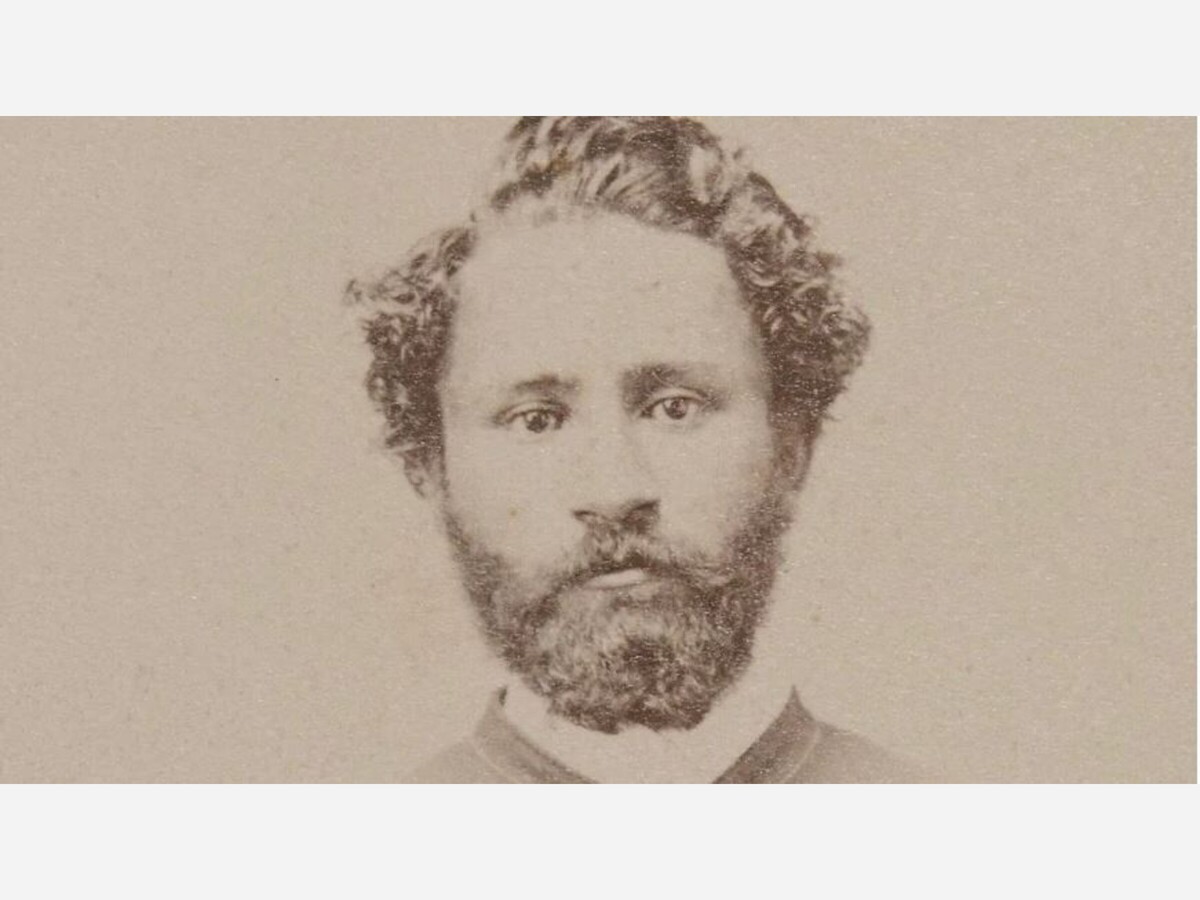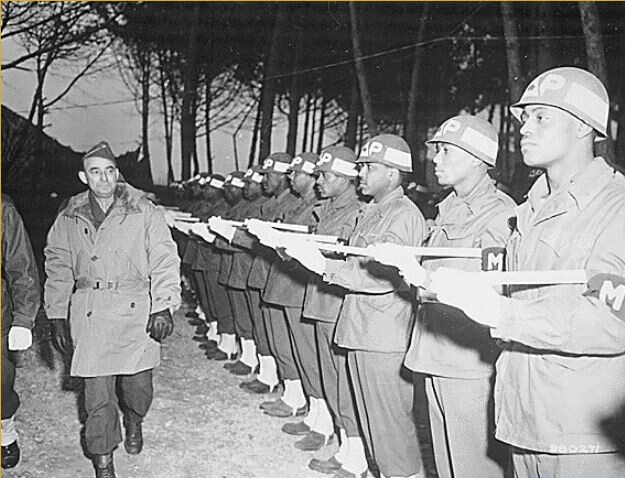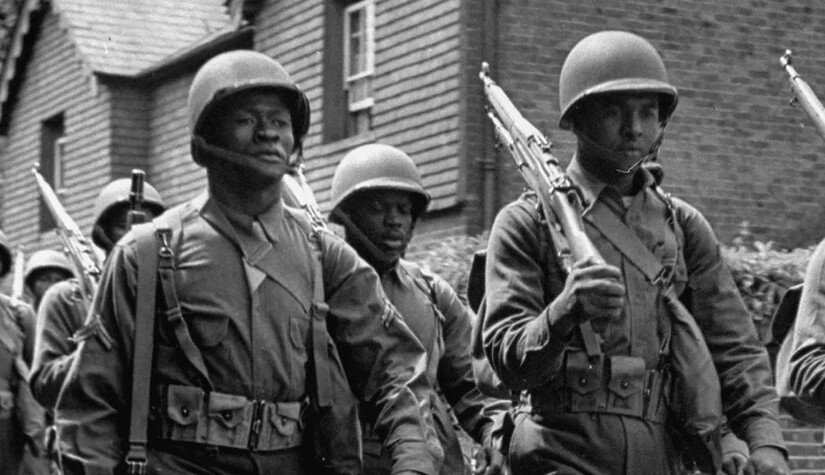Image


There is a quite a story buried in an unmarked grave at Crystal Lake Cemetery in Minneapolis. It’s a story about freedom, civil rights, U.S. military service, and discovering your roots. The man buried here is Sgt. John Wesley Harper, one of the first African-American soldiers with the U.S. Army. He fought in the Civil War and then spent his career with a unit at Fort Snelling in Minnesota. Minneapolis native, Harry Davis, is John Wesley Harper’s great-great grandson. When we walked the grounds of Fort Snelling with him, he mentioned the connection he felt with his past. "It makes the history of my family real," says Harry. "Because when you’re younger you hear stories, you don’t have nothing to apply it to," he adds.

There is quite a story buried in an unmarked grave at Crystal Lake Cemetery in Minneapolis.
It’s a story about freedom, civil rights, U.S. military service, and discovering your roots. The man buried here is Sgt. John Wesley Harper, one of the first African-American soldiers with the U.S. Army. He fought in the Civil War and then spent his career with a unit at Fort Snelling in Minnesota.
Minneapolis native, Harry Davis, is John Wesley Harper’s great-great grandson. When we walked the grounds of Fort Snelling with him, he mentioned the connection he felt with his past. "It makes the history of my family real," says Harry. "Because when you’re younger you hear stories, you don’t have nothing to apply it to."
Harry is piecing together his family history, which is part of the early African-American history of Minnesota.
Sgt. John Wesley Harper was in the 25th Infantry at Fort Snelling, among the Buffalo Soldiers who were African-American soldiers in the U.S. Army. There is an exhibit at Fort Snelling explaining their work and accomplishments. Bill Convery, the Director of Research for the Minnesota Historical Society, has studied this part of history.
"From 1882 to 1888, Fort Snelling was home to the 25th U.S. Infantry, one of four regiments that were collectively known as the Buffalo Soldiers. These were African American Regiments, recruits who were segregated in the Army before 1948," says Convery. "There were four companies stationed here (Fort Snelling), approximately 600 soldiers, as well as a military band. They fought in the Spanish-American War, and they fought with distinction in Cuba alongside Teddy Roosevelt’s Rough Riders."
For Harry Davis, he knew some of the pieces of his past, but wanted to document more for his own son. His grandmother had told him stories about John Wesley Harper, and he wanted to find the written history behind it.
"She used to tell me stories about him because he was in the Civil War. He used to march in the Veterans Day parade and wear his Civil War uniform with his sword. And people were honoring them," says Harry. "This was many moons ago. He died in 1920."
"And what happened to me when relatives found out I was doing that for my son, they started sending me stuff from all over the United States. Aunt so-and-so from Los Angeles had a picture of him when he was 25 years old, which is the Army picture," says Harry.
John Wesley Harper’s Army career actually began in Massachusetts with the 54th Massachusetts Regiment, the regiment that is the focus of the 1989 movie "Glory". Twenty-three pages of military records show the length of his service and document his time which included getting shot at the Second Battle of Fort Wagner.
"He actually got shot, and a bullet was in his leg for the rest of his life," says Harry.
A retired Hennepin County Judge is doing what Harry did on a much larger scale. LaJune Lange is embarking on a genealogy project to make sure more of these Minnesota faces, and names are known and that their descendants know this family history exists.
"I think we are missing the Black Civil War story," says Lange. "It’s good to show that we weren’t missing as a people of African descent in terms of building this state."
Lange is the president of a nonprofit called the International Leadership Institute. "We are looking at military records, cemetery records, interviewing descendants, looking at historic newspapers," says Lange. "St. Paul started publishing in the 1860s, and we have some newspaper accounts from the 1860s."

The Davis family has a rich history of U.S. military service, with Harry’s grandfather serving in World War I, uncles in World War II and Korea, and his son serving in Afghanistan and Kosovo. Harry’s son and grandson joined FOX 9 while walking around Fort Snelling.
"I think more or less, I have revered what those previous soldiers have done and what the bloodline for my family has done. Because if they didn’t do that then the military wouldn’t be what it is now, nor would American history. And the progress African Americans have made, is it perfect? No. But we’ve made quite a few gains since then," says Ramar Davis, Harry’s son.
"They were aware of their role in bringing civil rights to the U.S. and they were aware of their role in advancing civil rights in the United States. And they took very visible positions for equality," says Bill Convery of the Minnesota Historical Society. "That history is still around today, walking around in the memories and legacies of people who live here and remember and tell those stories."
SOURCE: FOX 9